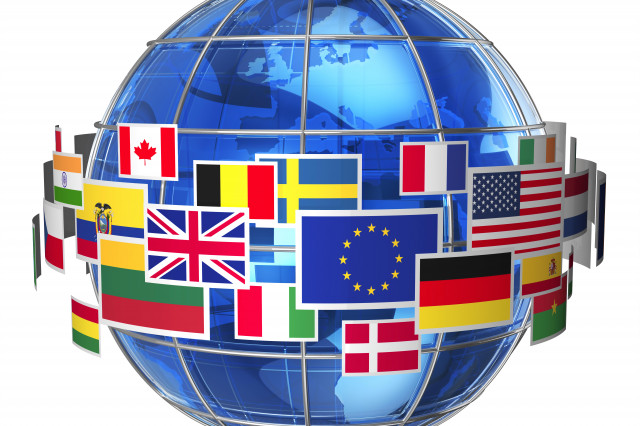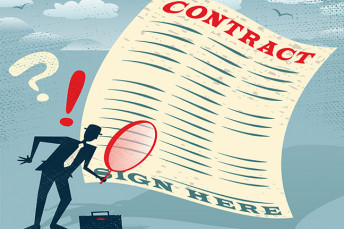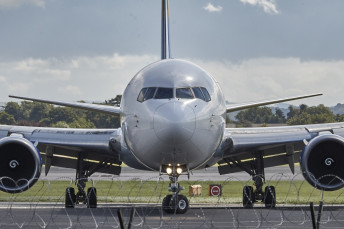
Motivation Behind U.S. Export Controls: Multilateral Agreements
Co-Author, Cynthia Roberts, Senior Consultant at Traliance
How many times do export controls compliance leaders hear “Why? That doesn’t make sense”? The simple response is that it doesn’t need to make sense. The U.S. government’s export controls regulations are…well, regulations. When working overseas or with foreign national personnel in the U.S., you need to understand the export controls rules, deemed export rules, and how they apply to your organization. The longer answer is that there is a broader motivation and international root to the U.S. export controls regulations. The United States is a member of many multilateral agreements, including 6 which define many of the requirements placed on U.S. exports as well as the items and information subject to special restrictions. The U.S. government’s commitment to these multilateral agreements are ultimately reflected in the Export Administration Regulations (“EAR”) under the U.S. Department of Commerce and International Traffic in Arms Regulations (“ITAR”) under the U.S. Department of State.
No. 1: Wassenaar Arrangement
With the cold war ending, many countries looked to establish a new framework to reduce the spread of both conventional weapons and dual-use goods and technologies. In 1996, the United States and the Russian Federation and 31 other countries agreed on goals and procedures as well as initial control lists for a “Wassenaar Arrangement on Export Controls for Conventional Arms and Dual-Use Goods and Technologies” (“WA”).
WA now has 42 member countries that each try to avoid transferring listed items to parties that may risk regional or international security by contributing to military capabilities or to terrorism. Each country maintains its ability to transfer or deny to transfer any listed good or technology. Under U.S. regulations, that ability is managed through the Departments of State and Commerce licensing processes.
The U.S. Munitions List (“USML”) in ITAR is significantly based on the “Munitions List” defined in WA. Categories 1-9 and many goods and technologies defined in these categories in the EAR’s Commerce Control List (“CCL”) are verbatim from WA’s “List of Dual-Use Goods and Technologies”.
No. 2: Chemical Weapons Convention
The Chemical Weapons Convention (“CWC”) is similar but focused on chemical weapons. The 1997 treaty prohibits the development, production, stockpiling, and use of chemical weapons and their precursors, with a focus on their destruction.
Most countries are members, with Israel, Egypt, North Korea, and South Sudan being the only United Nations member states that have not completed ratification. Recent updates include Syria’s accession in 2013 and the State of Palestine joining in 2018.
Countries must submit regular updates about listed chemicals, precursors, and facilities capable of producing them. Facilities are subject to inspection from the Organisation for the Prohibition of Chemical Weapons (“OPCW”), an intergovernmental body.
In the U.S., the obligations are part of the EAR, primarily in 15 CFR Part 745 Chemical Weapons Convention Requirements. The Bureau of Industry and Security (“BIS”) administers the annual reporting and inspection requirements which affect many U.S. trading and chemical companies.
No. 3: Biological Weapons Convention
The Biological and Toxin Weapons Convention (“BWC”) is a legally binding treaty designed to prohibit the development, production, acquisition, transfer, stockpiling, and use of biological and toxin weapons. Impacted items are captured in the EAR.
Like CWC, BWC is ratified by almost all world countries, with the exceptions being Chad, Comoros, Djibouti, Egypt, Eritrea, Haiti, Israel, Kiribati, Micronesia, Namibia, Somalia, South Sudan, Syria, Tanzania, and Tuvalu. Unlike CWC, there is no formal verification to monitor compliance.
No. 4: Australia Group
The Australia Group (“AG”) is not legally binding, but members coordinate national export control measures and help each other with CWC and BWC compliance. Begun in 1985, AG currently includes the European Union and 42 other countries, with the most recent new member being India in 2018.
CWC and BWC control lists define many export control classification numbers (ECCNs) in the EAR’s Commerce Control List (CCL), including 1C350-series materials, 2B350-series manufacturing facilities and equipment and 1E350-series technologies.
No. 5: Nuclear Suppliers Group
The Nuclear Suppliers Group (“NSG”) includes 48 countries capable of supplying key nuclear goods and technology. These countries are party to the Treaty on the Non-Proliferation of Nuclear Weapons (“NPT”) adopted by the United Nations. The NPT is ratified by 191 countries, including 5 with nuclear weapons: United Kingdom, United States, Russia, China, and France.
NSG expands the principles of NPT and specifically defines lists of associated materials, equipment, and technologies, as well as security and control requirements for the transfer of these goods and technologies. NSG goods and technologies have been transferred into multiple export control classification numbers (ECCNs) in the EAR’s CCL and ITAR’s USML. For instance, the NPT and NSG are part of the USML in places such as Category XVI — Nuclear Weapons Related Articles.
No. 6: Missile Technology Control Regime
The Missile Technology Control Regime (“MTCR”) consists of 35 countries that coordinate together to prevent the proliferation of unmanned delivery systems capable of delivering weapons of mass destruction. United States, Russian Federation, and European Union countries are among the signatories. MTCR items and technologies have been adopted throughout most categories in the CCL and multiple USML categories.
Connecting Back to U.S. Export Controls
As organizations explore potential export markets, it’s critical to determine the export control classification number of goods, technologies, and software for items that fall under the jurisdiction of the U.S. Department of Commerce. The ECCN is a key driver for determining if a BIS license is needed for a particular export. It’s helpful to understand how these multilateral agreements impact government licensing requirements.
Each ECCN has one or more “Reasons for Control” as defined by the EAR. Each Reason for Control triggers specific BIS license requirements and the evaluation of associated license applications aligns with the relevant multilateral agreement(s). Transferring goods and technologies between member countries is easier than to unaffiliated countries. Some goods are covered under more than one multilateral agreement but can have only one ECCN.
As one example, the EAR Reason for Control called “Chemical and Biological Weapons” or CB aligns with 3 multilateral agreements: Chemical Weapons Convention, Biological and Toxin Weapons Convention, and Australia Group. Another example is the Reason for Control called “National Security” or NS which is primarily driven by the Wassenaar Arrangement.
Making the connection between these multilateral agreements, export classification numbers can help personnel across an organization understand why a government license might be needed. This bit of background can prove invaluable when spreading awareness of U.S. export controls across your organization and answering the question of “why” the government cares.




Very good explanation of the rationale behind some of the concepts in the EAR and ITAR. I thank you for publishing this treatise.